Butrimonys town is an exclusive place in our country: a town having only one in Lithuania triangle-shaped square, decorated with a vortex water fountain, the only one in Lithuania. The triangle-shaped square of the town symbolically interlinked the fates of people of three nations that once lived here – the Tatars, the Lithuanians and the Jews.
The pre-history of Butrimonys existence dates back to the times of Vytautas The Great, the years around 1400 when the Tatars were brought and settled in this region. These new nation’s people were granted land in strategically important areas – in the neighbourhood of highways so that they could protect the roads. During the Wallach reform, in 1557, in the process of measuring land plots in the vicinity of the former Tatar settlement, Butrimonys village was founded. In written sources, this name was mentioned first in 1699. In the year 1720 already, the settlement that appeared between the Tatars’ zone and the village of Butrimonys, was referred to as a town. This town evolved on the crossroads, an intersection of three roads, leading from Vilnius to Alytus and Punia – a convenient place to be engaged in trade. This way, a triangle-shaped square formed, which became a place for commercial activity as well. Butrimonys markets saw lots of buyers and sellers, exposing a very wide range of goods, and even merchants from Russia and Poland used to arrive in this town. The year 1812, known for Napoleon’s crossing the Nemunas River and invading Russia, did not leave the town intact: this place stood in the strategic Napoleon’s route; so, it goes without saying, that French troops did not spare the property of townspeople. Nevertheless, traders appeared soon in the square, and their intensive activity caused the spontaneous recovery of Butrimonys town. Fire and flames devastated the town not once too. In the 19th century, Butrimonys used to have active communities of the Jews and Tatars. The Tatars were popular among those who needed animal skin and hide products, and their tannery workshops were well known, although, according to some descriptions survived, their leathers were not of perfect quality; the Tatars were engaged in vegetable gardening as well, and this brought quite good profits to them. Butrimonys was a place well known for its markets, where trading in livestock prevailed. This fact helped to conceal the operations of horse thieves, who were acting boldly and used to have ties even with the tsarist police force, thus being free to be engaged in stealing horses. There was another thing because Butrimonys was a place attracting people: local craftsmen knew how to make handmade high-quality tobacco pipes. These items were sand-treated with artistic taste and plated with silver tin. The price of one handmade pipe used to reach up to 5 rubbles here.
In 1936, the newspaper “Lietuvos aidas” wrote about what Butrimonys town had to offer: “The town is large. Streets are paved, sidewalks are tidy. Big markets take place on Tuesdays and people come here from other counties. Butrimonys residents have a unique church with a single tower.” Although this market square description includes the church, this building occupies an area a bit farther away, as the central square was intended for trade only.
Irrespective of dates and historical facts, there is a legend, describing the emergence of Butrimony Town. Once upon a time, Butrimas, a trader, came to this land to live and work. He built a spectacular house in the place, where roads intersect, and began to engage in various types of trade. Folks got interested in the place, where he located his farmstead: it was not only picturesque but useful as well because several buyers were passing by. Later, others followed Butrima's example and a town emerged that was named after its first resident. And there is some truth to the legend – Butrimonys means the surname Butrimonis just in plural.
Butrimonys is the place of birth of Bernard Berenson (1865–1959), a famous art historian and critic, specializing in the Renaissance, and Senda Berenson Abbott (1868–1954), who was a pioneer in American basketball and 1985 was inducted into the Women‘s Basketball Hall of Fame. Butrimonys school is the place, where outstanding people of art, Laureates of National Premium, artist Antanas Kmieliauskas (in 2008, he was proclaimed an Honorary Alytus District Citizen) and opera singer Irena Milkevičiūtė, went to school.
Since 2014, Butrimonys town has been hosting “Adamkiada” (Adamkus Games), a traditional National Schoolchildren’s Art and Sports Festival to honour President Valdas Adamkus. Students from all Lithuanian schools participate and compete in His Excellency’s youth favourite events. Children with innate artistic abilities take part in the plain air.
Butrimonys town has been included in several national tourism itineraries as a destination: “Let’s Follow the Footsteps of Lithuanian Presidents” and “Panemunė Dzūkai Tourism Route”.
A Triangle-Shaped Square in Butrimonys
Butrimonys was founded on the crossroads of three roads: from Vilnius to Alytus and Punia. Therefore, this triangle-shaped square once became a market square. Around this marketplace, land parcels were partitioned and allocated to the merchants and craftsmen, thus causing the development of the entire town. In the old part of the town, which had been formed before the end of the 18th century, one can walk the same old streets and, finally, reach the same old triangle-shaped square. This place has the shape of an equilateral triangle. Such a type of square is the only one in Lithuania and is included in the List of Urban Monuments. This historical square is surrounded by houses of merchants and craftsmen, built at the beginning of the 20th century. The unique triangle-shaped square in Butrimonys is depicted on the coat of arms of the town, approved by the Lithuanian President on 22nd August 2001.
The space in the square became even more beautiful after reconstruction in 2019, and since then this place has attracted many locals and others. And no wonder, as everybody enjoys it: children have playgrounds with outdoor musical instruments and swings as a must; a drinking water installation invites to quench thirst… A symbol from the old square, a stone weighing 58 t, gives a special charm to this space: it has an inscription carved in 1999 “To The Fighters for Lithuania’s Independence”. A wooden sculpture “A Lithuanian Girl” (authored by A. Judickas), which stands nearby, provides additional meaning to this symbol. Still, the fountain, the only one in Lithuania's vortex water fountain, remains the main attraction in the square.
Margirio str., Butrimonys, Alytus District
GPS: 54.501002, 24.252415 (WGS)
A Fountain in Butrimonys
In 2019, following the reconstruction of the town’s square, this place was embellished with the only one in this country Vortex Water Fountain. In the middle of the acrylic balloon, a large water whirl is rotating and water is flowing down the Fountain’s wall, which creates a fascinating view. After dark, the Fountain becomes illuminated and colourful.
Margirio str., Butrimonys, Alytus District
GPS: 54.501002, 24.252415 (WGS)
Sculpture to commemorate Sendai Valvrojenski (Sendai Berenson-Abbott)
On the occasion of the 100th anniversary of Lithuanian basketball, a monument in memory of Senda Valvrojenski was built in Butrimonys. Senda Valvrojenski (Berenson-Abbott) in 1868 is called the mother of world women's basketball, author of the first game rules and organizer of the competition. March 19 was born in Butrimonys, lived here until the age of 7, and later emigrated to the USA with his parents. in 1893 March 22 organized the first basketball competition between freshmen and sophomores at Smith College in Boston. A large number of student spectators crowded into the gymnasium, some simply hanging on the railing. Men were not allowed in because the girls wore "only" knee-length clothing. It was a historic moment at the women's college - 24-year-old Senda was soon offered to teach physical education here. Within a few years, basketball spread throughout the country's women's schools. S. Berenson became famous as its biggest promoter and wrote and published the rules of this game, which were officially approved in 1899. These rules were followed until the 20th century early sixties.
Died in 1954 February 16 in Santa Barbara (USA). In 1985 Senda was inducted into the USA Basketball Hall of Fame in 1987. - to the International Jewish Sports Museum, and in 1999 - to the Women's Basketball Museum.
The Lithuanian Basketball Federation (LKF), "Krepšinio namai", the Cultural and Historical Memory Foundation and the Alytus District Municipality joined the idea of erecting the monument.
Vytauto g., Butrimonys
GPS: 54.500996, 24.252934 (WGS)
The Saviour’s Church in Butrimonys
The first church in Butrimonys was erected in the 18th century and it was a wooden structure. Later the church was restored, reconstructed, and, finally, a new one was built. There was a project of the church’s reconstruction prepared in 1901, yet it remained not implemented. In 1906, the architectural project of A. Filipowich-Dubovsky, a stone church, which survived until our days, was commenced. The festive consecration ceremony of foundations took place on May 13th 1908. During the construction of the church, the old one was not demolished, it remained inside the new building. The construction works on the stone church were interrupted by World War I. The massive single-tower church was completed in 1926 only. The style of the church is eclectic with some signs of Romanesque style; the facade tower is situated on the right. The church houses valuable artworks of painting and folk art of the early 19th century, as well as early creative works of the outstanding artist Antanas Kmieliauskas, who was born in the Butrimonys neighbourhood. The churchyard is enclosed by a stone fence and has a gate with three arches.
Margirio str. 22, Butrimonys, Alytus District, phone: +370 611 54 406
GPS: 54.502185, 24.246847 (WGS)
Old Cemetery of Butrimony Jews
Most likely the first burials took place even in the 18th century here. Data shows that in 1765–1766, 240–282 Jews were residing in the town; in 1868 their number reached 1151; in 1897 – around 2000.
In the northern part of the Cemetery, in 1999, a memorial was erected (authored by A. Janušonis) to honour the Holocaust victims, having inscriptions in Lithuanian and Hebrew languages: “In Memory of the Holocaust Victims. More than 50 female Jews from Butrimonys were murdered here in 1941”.
The Cemetery is fenced with a metal enclosure and included in the Register of Immovable Cultural Properties.
Margirio str.t, Butrimonys, Alytus District
GPS: 54.502000, 24.244000 (WGS)
A Stone Cross to Honour a Memory of Pope Francis's Visit to Lithuania
On the occasion of Pope Francis's visit to Lithuania (the Pope’s visit lasted from September 22nd to September 23rd, 2018), in Butrimonys, a stone cross 3 m high was consecrated on 16th September 2018, dedicated to this event. The idea of the Pope honouring before his visit occurred to Daina Nemeikštienė, the founder of the Art Gallery “Daina’s Gallery”, while her brother professional sculptor Darius Miliauskas has realized this idea. This gift from the brother and sister has become one of the first symbols, immortalizing the upcoming Pope Francis’s visit to Lithuania. The cross has been erected in the vicinity of the Butrimony Parish House.
Margirio str. 15, Butrimonys, Alytus District
GPS: 54.501763, 24.247915 (WGS)
A Monument in Memory of Lithuanian Partisans “They Gave Their Lives for the Homeland 1944-1949.”
About 40 Lithuanian partisans lost their lives in the Butrimonys neighbourhood in 1944–1949. The bodies of many local partisans were desecrated in the central square of Butrimony town and later buried secretly in different locations. In the summer of 1990, a search for partisans’ remains was organized. The remains of four partisans were found. They were buried in the cemetery of Butrimonys. According to the Cultural Heritage Department, five partisans of the Duke Margis Unit of the Dzūkai Squad of Dainava District were buried in this grave. In 1993, a monument was unveiled and consecrated in this burial location containing the main plaque with an inscription “They Gave Their Lives for the Homeland 1944–1949”. Other plaques were erected with the names and surnames of killed partisans, the burial places of whom had not been found.
In 1999, within the framework of festivities devoted to the 300-th anniversary of Butrimony town, a stone in the central square, where the process of partisans’ body desecration had taken place, was marked with an inscription: “To The Fighters for Lithuania’s Independence”.
Margirio str., Butrimonys, Alytus District
GPS: 54.501000, 24.246000 (WGS)
GPS: 54.501081, 24.252551 (WGS)
A Headstone of the Kmieliauskai Family
A red granite headstone, having the shape of an irregular rectangle and containing a Pieta relief, was created and erected by Antanas Kmieliauskas. It was intended for the family grave in the Butrimony cemetery and has stood here since 1965. This artwork was among the earliest works by this sculptor, the future Laureate of the National Premium. The headstone is included in the Register of Immovable Cultural Properties.
Margirio str., Butrimonys, Alytus District
GPS: 54.501000, 24.246000 (WGS)
A Monument to the Victims of the Mass Shooting of Jews in the Village of Klydžionys
On September 9th the year 1941, in the villages of Klydžionys and Trakininkai, Jewish people were murdered (they had been brought from the neighbouring towns of Birštonas, Butrimonys, Punia and Stakliškės). The killings commenced at the time of sunset and continued without stopping until midnight. The killed Jewish people were buried in mass graves with a 600 m distance between them. In total 740 persons were murdered. On the site of the mass grave, a monument has been erected in the village of Klydžionys.
Mass killing locations are included in the Register of Immovable Cultural Properties.
Trakininkai Village, Butrimonys Neighbourhood, Alytus District.
GPS: 54.488481, 24.253659 (WGS)
Klydžionys Village, Butrimonys Neighbourhood, Alytus District.
GPS: 54.484857, 24.259609 (WGS)
Geruliai Hillfort
The Hillfort, dating back to the middle of the 1st millennium – early 2nd millennium, surrounded by valleys of rivulets on the northern, western and southern sides, is called differently as well: Zamkus or Zamkelis. The hillsides are steep, 8–11 m high. The site is oval, about 45 m long and 21 m wide. A rampart 170 m long (1–4.5 m high) surrounds the Hillfort in a circle. There are four pits on the site, which remained as amateurish excavations by German troops in 1916–1917. North and east of the Hillfort foot, across the rivulet, an ancient settlement was discovered. A cultural layer of up to 0.5 m thickness was found with fragments of handmade plain and coarse surface pottery and a brooch, loop type, containing a triangle stem.
Geruliai Hillfort is included in the Register of Immovable Cultural Properties.
Stakliškių str., Geruliai Village, Butrimonys Neighbourhood, Alytus District.
GPS: 54.531319, 24.270477 (WGS)
Art Gallery Dainos Galerija (Daina’s Gallery)
At the Art Gallery, founded by Daina Nemeikštienė, you can familiarize yourselves with numerous artists of our country, the district and the neighbourhood. Exhibitions or symposia held there attract many people. Darius Miliauskas, the brother of D. Nemeikštienė, is a professional sculptor, who was among those, who initiated and established the Lithuanian International Heraldry Foundation.
Visiting the Gallery by prior phone arrangement.
Vilniaus str. 1, Butrimonys, Alytus District, phone: +370 685 32 787
GPS: 54.501381, 24.253463 (WGS)
Butrimonys Museum: Lithuanians – Tatars – Jews
Modern expositions tell the story of the area and the fate of the three peoples (Lithuanians, Tatars and Jews) who lived here in an original way.
Visits must be arranged in advance.
You can also tour the museum virtually:

Vytautog.31, Butrimonys, Alytaus district, phone +370 315 61 386
GPS: 54.500961, 24.251624 (WGS)
Butrimonys Gymnasium Ethnographic Museum
The museum was established in 1997. It was later refurbished and expanded not once (at present, it occupies 4 rooms). The museum houses almost 900 exhibits, hundreds of photographs and a large 19th-20th-century numismatic collection. Visitors can explore an interesting and rich exposition Road of Flax, a detailed history of the Gymnasium and see household objects and working tools used at Butrimony Eldership at the beginning of the 20th century.
Visiting by prior phone arrangement.
Draugystės str. 1, Butrimonys, Alytus District, phone: +370 315 61 386, www.butrimoniumokykla.lt
GPS: 54.503873, 24.250664 (WGS)
Authors of photographs: D. Jakubavičius, The Archive of Alytus Tourism Information Centre and Alytus District Municipality Administration.



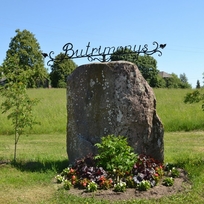
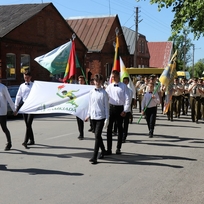
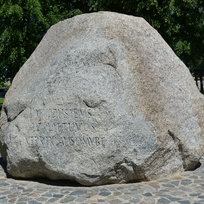
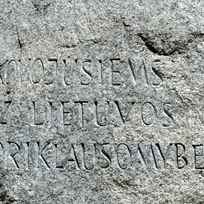
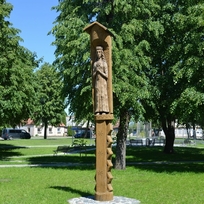
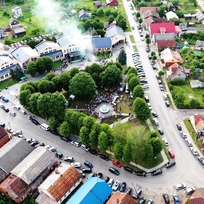
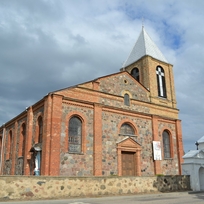
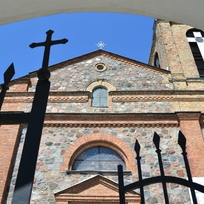
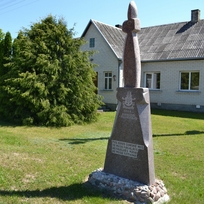
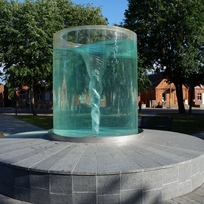
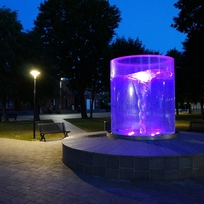
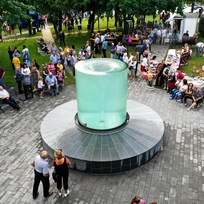
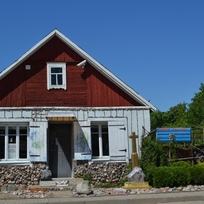
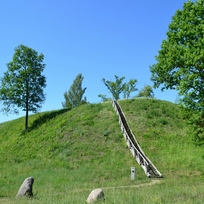
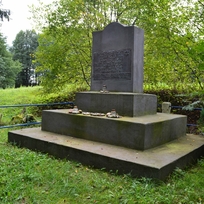
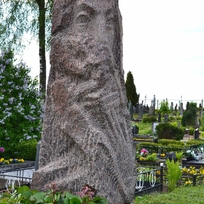
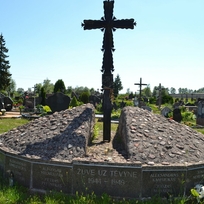
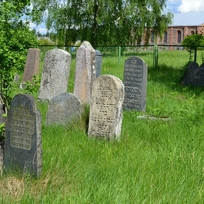
Reviews